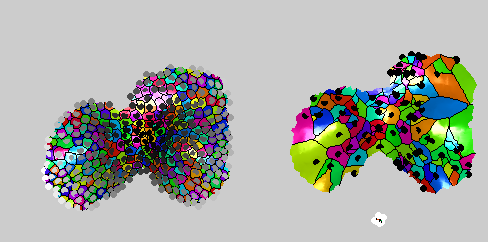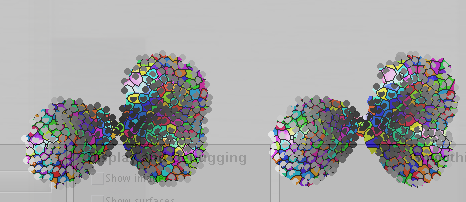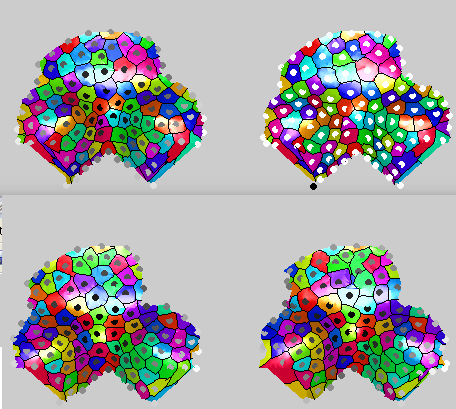A Diffusion-based Approach for Verification
 COLLEAGUE has said that diffusion-based methods were never quite so suitable for the task of analysis of surfaces where differences are very subtle. However, even when poorly adjusted, performance can be somewhere at the range of 80% recognition (3-D only, we never use 2-D). It is not clear how to divide the face and one suggestion made at the lab last week (when face-to-face meetings took place) is that smoothing methods should be changed and parts that are problematic removed altogether to reduce noise-to-signal ratio. With diffusion-based methods, performance exceeding 90% should be attainable, but it still trails behind some other methods that we tested.
COLLEAGUE has said that diffusion-based methods were never quite so suitable for the task of analysis of surfaces where differences are very subtle. However, even when poorly adjusted, performance can be somewhere at the range of 80% recognition (3-D only, we never use 2-D). It is not clear how to divide the face and one suggestion made at the lab last week (when face-to-face meetings took place) is that smoothing methods should be changed and parts that are problematic removed altogether to reduce noise-to-signal ratio. With diffusion-based methods, performance exceeding 90% should be attainable, but it still trails behind some other methods that we tested.
I have read a lot of literature (5 papers) that presents surveys with performance benchmarks. For 3-D alone, the recognition (verification) results are not so high, at least based on surveys from a few years back. I’ll further refine diffusion-based methods as more capable computational servers return online (after over a week of partial downtime).
For context, see this previous post and some example results (GMDS and ROC curve).









 Filed under:
Filed under:  NE of my favourite songs as of late is actually one that I knew well as a kid (but never quite paid attention to its lyrics). The composition of this piece would be hard to reproduce (many vocals and orchestra) and this particular version is a lot better than the many alternative ones.
NE of my favourite songs as of late is actually one that I knew well as a kid (but never quite paid attention to its lyrics). The composition of this piece would be hard to reproduce (many vocals and orchestra) and this particular version is a lot better than the many alternative ones.













